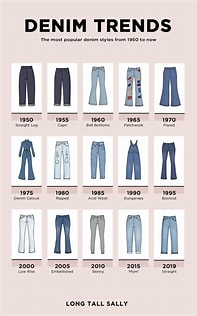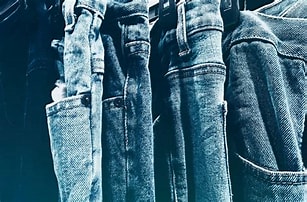The Evolution of Denim
Denim has woven itself into the very fabric of our lives, transcending its humble beginnings as sturdy workwear to become a global fashion staple. This article explores the fascinating journey of denim, highlighting its evolution, cultural significance, and the reasons behind its enduring popularity.
Introduction
When you think of denim, what comes to mind? Perhaps it’s your favorite pair of jeans or a classic denim jacket that has seen better days but still holds a special place in your wardrobe. Denim is more than just a fabric; it’s a symbol of rebellion, comfort, and style that has been embraced by generations. But how did this rugged material evolve from workwear to high fashion? Let’s dive into the rich history and transformation of denim.

The Origins of Denim
Denim’s story begins in the late 17th century in Nîmes, France. Originally known as “serge de Nîmes,” this sturdy cotton twill fabric was designed for durability. The name was eventually shortened to “denim,” and its robust nature made it ideal for labor-intensive jobs. Miners, farmers, and laborers quickly adopted denim for its ability to withstand the rigors of daily toil while providing comfort.
The Birth of Blue Jeans
The modern blue jeans we know today owe their existence to Levi Strauss, a German immigrant who arrived in San Francisco during the Gold Rush. In collaboration with tailor Jacob Davis, Strauss patented a design in 1873 that incorporated metal rivets at stress points, reinforcing the fabric’s strength. This innovation marked the birth of blue jeans, which quickly became popular among miners and cowboys seeking durable clothing for their demanding lifestyles.
Denim in the Early 20th Century: Workwear Staple
Throughout the early 1900s, denim continued to be associated with blue-collar work. It became a staple for railroad workers, farmers, and laborers who appreciated its ruggedness and practicality. The fabric’s ability to hide stains made it a practical choice for those whose work was physically demanding.
The Mid-20th Century: Hollywood and Rebellion
The transformation of denim from utilitarian fabric to fashion statement began in the mid-20th century. Hollywood played a pivotal role in this shift. Iconic actors like Marlon Brando and James Dean donned denim jeans in films such as “Rebel Without a Cause,” portraying a sense of youthful defiance and rugged masculinity. This association with rebellion resonated with the youth of the time, leading to denim’s rise as a symbol of counterculture.
The Cultural Significance of Denim
As denim gained popularity among young people in the 1950s and 1960s, it became intertwined with various cultural movements. It was embraced by beatniks, hippies, and rock ‘n’ roll enthusiasts as a form of self-expression and a rejection of traditional norms. Denim jeans were no longer just clothing; they became a canvas for individuality.
Gender Fluidity in Denim Fashion
Initially dominated by men’s fashion, denim began to transcend gender boundaries in the 1970s. Women started adopting denim jeans as versatile fashion items, leading to various styles such as flared jeans and bell-bottoms. This shift allowed individuals to express their personal style through different fits, washes, and embellishments.
The High Fashion Revolution: 1980s and Beyond
The 1980s marked a significant turning point for denim as it made its way into high fashion. Renowned designers like Calvin Klein and Gloria Vanderbilt began incorporating denim into their collections, elevating its status from casual wear to high-fashion staple. Denim skirts, jackets, and even dresses emerged as popular choices, showcasing its versatility beyond traditional jeans.

The Grunge Era: Authenticity and Individuality
In the 1990s, denim experienced a cultural resurgence with the rise of the grunge movement. Artists like Kurt Cobain embraced distressed denim as part of their anti-establishment ethos. This era celebrated authenticity and laid-back style, further solidifying denim’s place in contemporary fashion.
Denim Today: A Timeless Staple
Today, denim is firmly established as a fashion staple that transcends generations and cultures. It effortlessly bridges the gap between casual and formal wear, offering versatility for various occasions. From skinny jeans to wide-leg styles, there is a perfect pair for everyone.
Sustainability in Denim Fashion
As awareness grows about environmental issues within the fashion industry, many brands are focusing on sustainability efforts related to denim production. Innovations such as upcycled denim and eco-friendly materials are becoming increasingly popular among consumers who seek stylish yet sustainable options.

The Global Impact of Denim
Denim’s influence extends beyond borders; it has become a global phenomenon embraced by diverse cultures around the world. From streetwear to haute couture runways, designers continue to reinterpret denim in innovative ways that reflect local aesthetics while maintaining its timeless appeal.
The Future of Denim: Trends to Watch
Looking ahead, several trends are shaping the future of denim fashion:
- Sustainable Practices: As consumers demand more eco-friendly options, brands will continue exploring sustainable practices in production.
- Technological Innovations: Advances in textile technology may lead to new types of denim that offer enhanced comfort or functionality.
- Inclusive Sizing: A growing emphasis on body positivity will likely result in more inclusive sizing options across all styles.
- Customization: Personalization through custom fits or unique designs will cater to individual tastes.
Conclusion
From its origins as sturdy workwear to its status as an iconic fashion staple, the evolution of denim showcases its remarkable adaptability and cultural significance. As we move forward into an ever-changing fashion landscape, one thing remains clear: denim will continue to be a beloved fabric that connects us all through style and self-expression.
FAQs About Denim Evolution
1. What is the origin of denim?
Denim originated in Nîmes, France during the late 17th century as “serge de Nîmes,” a durable cotton twill fabric designed for workwear.
2. Who invented blue jeans?
Levi Strauss and tailor Jacob Davis patented blue jeans in 1873 by adding metal rivets at stress points for added durability.
3. How did Hollywood influence denim’s popularity?
Hollywood icons like Marlon Brando and James Dean wore denim in films during the 1950s, associating it with rebellion and youth culture.
4. What are some current trends in denim fashion?
Current trends include sustainable practices in production, technological innovations in fabric design, inclusive sizing options, and customization opportunities.
5. Why is denim considered versatile?
Denim can be dressed up or down for various occasions—ranging from casual outings to formal events—making it suitable for all wardrobes.
This exploration not only highlights how far denim has come but also emphasizes its enduring nature as both functional clothing and high-fashion statement pieces that resonate with people worldwide.


